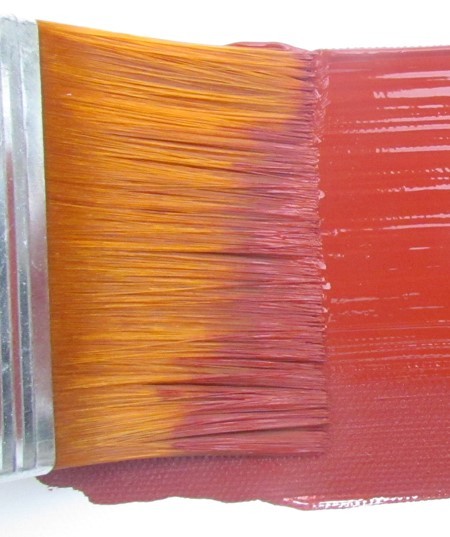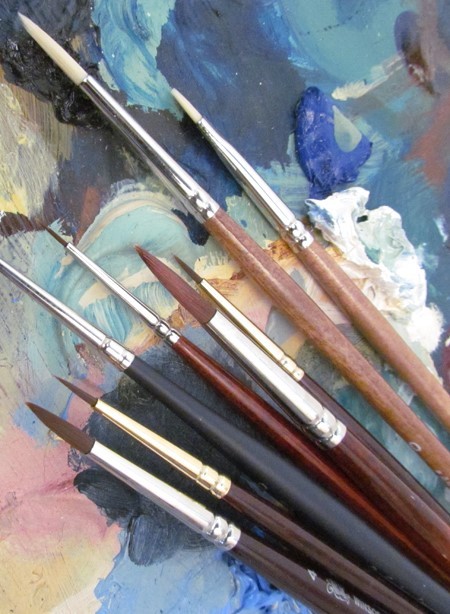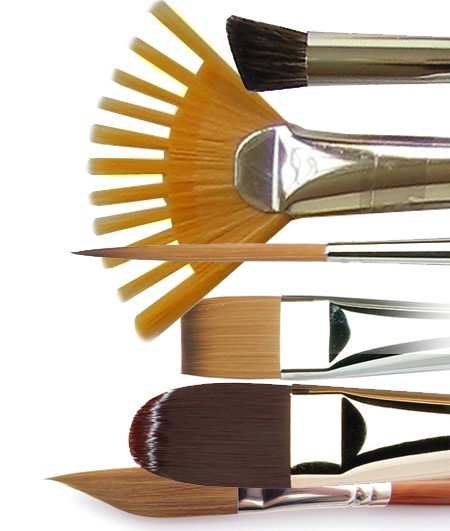Which Brushes are best for Painting with Acrylic?
To some extent, this will depend on your style of painting – whether you use your acrylics like oil or more like watercolour – but for the most part, the brush will be a synthetic of either Taklon or Nylon fibres.

Thick or thin acrylic Paint? Your brush choice will depend on your painting style
Taklon is a polyester fibre which is extruded and tapered to a fine point and made in a number of thicknesses. The diameter affects the stiffness or softness of the brush and therefore an individual’s painting style will determine which Taklon is best for them.

Taklon is available in white or gold colours with White Taklon being considered the most pure form and usually displaying qualities superior to dyed Taklon.

Nylon is a smoother fibre so, whilst it can still withstand being used with thick acrylic paint straight out of the tube, it also suits being used with thinned acrylic in more of a watercolour application. A good quality synthetic of either Taklon or Nylon will hold its shape as well and small sizes can achieve a fine point for details.

There are more synthetic ranges than natural hair ranges so it can be quite confusing when first choosing a range that will suit you but really most synthetics will be versatile enough to facilitate most Acrylic painting styles.
Ranges such as the Pro Arte Academy or Polar, the Winsor and Newton University or the Royal Langnickel SVP1 OR SVP7 offer all purpose, low cost synthetic fibre brushes for experimenting with the numerous ways in which acrylic can be applied.
Winsor and Newton’s Galeria range is split into short-handled and long-handled. The short-handled version has a slightly softer filament allowing the artist to apply the acrylic with more of a watercolour technique whilst the long-handled version has a stiffer hair for using the acrylic in more of an oil-painting way.
Pro Arte’s Sterling ranges are also split into short and long handled versions with the short Sterling Acrylix offering great spring and control for detail and the long handled Sterling 201 also offering this whilst being perfectly balanced for standing away from the canvas when working on a larger scale.
Hogs can also be used with undiluted acrylic where the brush marks are required to be visible or simply where you need a brush that is stiff enough to cope with viscous heavy bodied paint or a very rough surface.
Sable, camel, goat and other soft natural hair are not recommended for acrylic as the viscosity can damage the hair. The short drying times of acrylic can also be detrimental to natural hair because the absorbent hair dries even quicker and will not take the vigourous cleaning that is required to remove solidified acrylic.

Synthetic brushes come in a wide variety of brush shapes such as rounds, flats, filberts, fans, riggers, swordliners , combs and deerfoot brushes.

